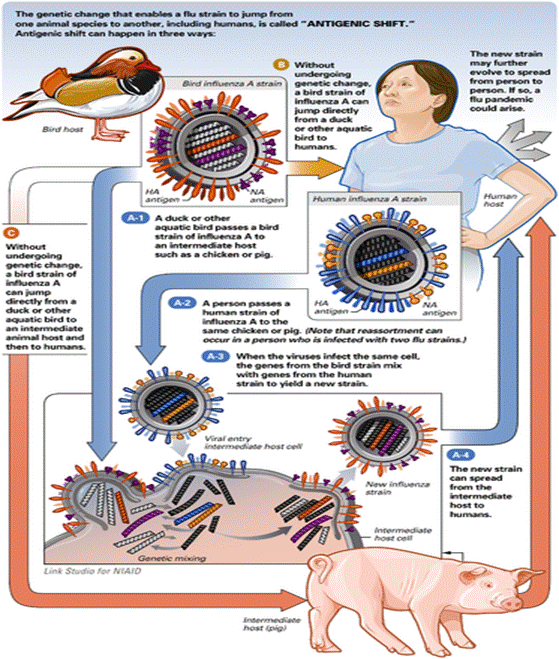Swine influenza H1N1
Swine influenza H1N1
Novel influenza A (H1N1) is a new flu virus of swine origin that was first detected in April, 2009. The virus is infecting people and is spreading from person-to-person, sparking a growing outbreak of illness in the United States. An increasing number of cases are being reported internationally as well.
It’s thought that novel influenza A (H1N1) flu spreads in the same way that regular seasonal influenza viruses spread; mainly through the coughs and sneezes of people who are sick with the virus.
It ’s uncertain at this time how severe this novel H1N1 outbreak will be in terms of illness and death compared with other influenza viruses. Because this is a new virus, most people will not have immunity to it, and illness may be more severe and widespread as a result. In addition, currently there is no vaccine to protect against this novel H1N1 virus. CDC anticipates that there will be more cases, more hospitalizations and more deaths associated with this new virus in the coming days and weeks.
If a person becomes sick with swine flu, antiviral drugs can make the illness milder and make the patient feel better faster. They may also prevent serious flu complications. For treatment, antiviral drugs work best if started soon after getting sick (within 2 days of symptoms). Beside antivirals, palliative care, at home or in hospital, focuses on controlling fevers and maintaining fluid balance. The U.S. Centers for Disease Control and Prevention recommends the use of Tamiflu (oseltamivir) or Relenza (zanamivir) for the treatment and/or prevention of infection with swine influenza viruses, however, the majority of people infected with the virus make a full recovery without requiring medical attention or antiviral drugs. The virus isolates in the 2009 outbreak have been found resistant to amantadine and rimantadine.

Dr Binish Arif
